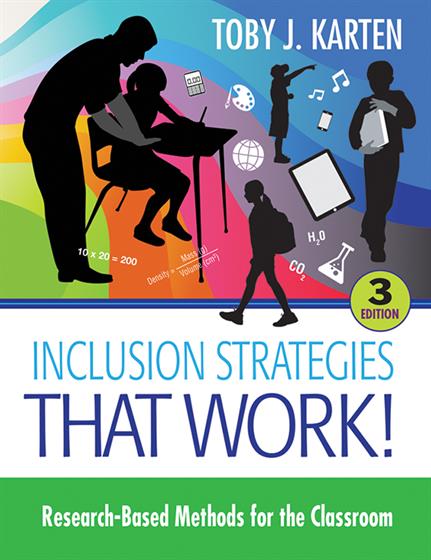List of Inclusive Activities and Worksheets for Teachers and Students
Preface
Acknowledgments
About the Author
1. Examining the Research Base and Legal Considerations in Special Education, CCSS Connections, and the Reasons for Inclusion
Disability Legislation
Introduction: Why Do Inclusion?
Establishing Legislative Knowledge
Disability Categories Under Individuals with Disabilities Education Act (IDEA)
History of the Americans with Disabilities Act
Civil Rights for Students with Disabilities Under Section 504
Past, Present, and Future Concerns
Common Core State Standards
Cooperative Legislative Review
Implications of the Elementary and Secondary Education Act
Translating Research Into Learning Strategies That Work
Inclusion and the Student With Disabilities
2. Understanding Complicated Special Education Terminology and the Effects of Labels
Disability Introspection
Being Treated Differently
Merits of Individuality
Disability Awareness Classroom Suggestions
Viewing Differences in Books and Movies
Different Choices
Preparation for Successful Inclusion
Focusing on Abilities
3. Establishing Successful Inclusive Classrooms
Strategies That Work With All Learners
Effective Ingredients
Applying Diverse Strategies
Strategic CCSS Applications
Establishing Prior Knowledge
The Goal of Special Education
Motivating and Personalizing Learning Choices
Multiple Intelligences of Students
Learning Analysis
Concretizing Learning
Learning Designs
Problem- and Project-Based Learning Connections
Kinesthetic Connections
Sensory Approaches and Learning Modalities
4. Next, Writing and Applying the Individualized Education Program
What Exactly Is an IEP?
Practical Guidelines for Using and Writing the IEP
Appropriate Goals and Skills to Consider When Writing an IEP
How to Track and Document IEPs
IEP Challenges
Implementing Adaptations by Charting Lessons
5. Introducing Social, Emotional, and Behavioral Issues Into the Curriculum
Connecting Cognitive and Affective Skills
Addressing Emotional Intelligences
Behavioral Approaches for Educators
Functional Behavioral Assessment
Transitional Services
Ways to Teach Social Skills
Classroom Climate
6. Reaching and Co-Teaching Your Students
Educational Collaboration
Building Productive Relationships
Collaborating as a Team
Classroom Dynamics
More Lesson Concerns
Teen Culture
7. The Common Core State Standards and Using the Three Rs to Guide Instruction and Assessment
First R: Reading
Second R: ’Riting
Third R: ’Rithmetic
Complementing the Basics
Artful Education
Science by Observing, Doing, and Thinking
Social Studies: Connecting Students to Their World
Valuing Physical Education
Interdisciplinary Approach: Educational Salads
8. Emphasizing Comprehension and Study Skills
Learning More About Learning
Developing Better Practices
Teaching for More Understanding
Organized Environments
9. Assessing, Testing, and Grading Your Students
Purposeful Assessment Representations
Classroom Scenarios
User-Friendly Testing Formats
Assessment Trends
CCSS and Assessments
Rubrics
10. Working With Parents and Families of Students With Disabilities
Valuing Parents and Families
Parents, Families, and Teachers as Allies
Resources and Organizations for Parents, Guardians, and Families
11. Infusing Technology Into the Inclusive Classroom
Benefits and Promising Futures
Classroom and Community Implications and Resources
Sample High School In-Class Lesson—Combining Literature and Technology
Educational Ideas, Websites, and Resources
Sites to Investigate for Students and Staff Across the Curriculum
12. Reflecting as Classroom Practice
Reviewing and Maintaining Skills
Preteach, Teach, Reteach
Summing Up the Learning
Combining Elements
Resources
Resource A. Disability Tables
Resource B. Organizations
Resource C. Alphabetized Acronyms
References and Further Readings
Index


